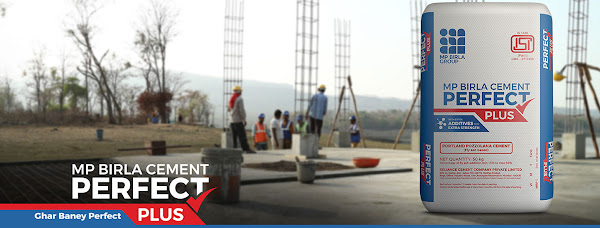PPC, OPC and PSC: 5 Vital Differences to Keep in Mind
People often use the term ‘cement’ when they actually mean to talk about concrete. Is there a difference between the two? Absolutely! Cement is an ingredient that serves as a binder while concrete is the final hard surface that we see at the end. In short, one is the product while the other is included in the recipe.
However, there is so much more to cement.
In its basic form, it is a grey power that comprises of limestone, calcium, aluminium, clay and other materials. After mixing these ingredients together, the combination is heated at a high temperature, cooled and then processed. What we see next is the formation of concrete.
But be aware! All projects do not use the same kind of cement!
Each has its own unique properties, composition and subsequent uses in different industries.
So let’s dive in and discuss three major types of cement:
PPC:
This type of cement is made up of OPC clinker, Gypsum and Pozzolanic Materials like fly ash and silica fumes. Displaying a high resistance to various chemical attacks on concrete, the use of PPC cement is primarily observed in hydraulic structures, sewage works, dam construction and construction near the seashore.
Whether for a mass construction project or for water retaining structures, it is the ideal choice of cement.
Benefits:
Higher resistance to water
Lower heat of hydration
Enhanced resistance to chemicals
Better impermeability
OPC:
This type of cement is made up of argillaceous or silicates of alumina (clay and shale) along with Calcareous or calcium carbonate (limestone, chalk, and marl). OPC cement comes in three different grades: 33, 43, and 53 (based on the compression strength of the concrete). This cement also finds relevance in general construction purposes, masonry work and plaster for a perfect finish to walls.
Benefits:
Great resistance to cracking and shrinkage
High initial setting strength
Easy manufacturing process
PSC:
PSC is the combination of Portland cement clinker and granulated blast furnace, about 65% of the mixture is blast furnace slag. PSC cement is widely used for creating structures in coastal regions due to its exceptional corrosion resistance properties against sulfate and chloride. It is highly preferred for sewage disposal and marine constructions as well as purposes where economic considerations are necessary.
It is preferred for water retaining structures, dams due to high resistance alkali-silica reactions.
Benefits:
Highly sulfate resistance
Ultimate compressive strength
Superior finish with minimized shrinkage cracks
Differences between PPC, PCS and OPC grades of cement
OPC beats PPC cement in terms of initial setting time and curing period
PPC beats OPC in terms of mass concreting (due to its OPC’s higher heat of hydration)
PPC is cheaper and better suited for mass concreting than PSC cement
The durability and workability of OPC’s concrete is lesser than that of PPC’s
PSC beats PPC and OPC cement for construction near seashore areas
Each type of cement wins in certain situations due to its inherent properties. Hence, tread with caution when it comes to choosing your cement before the commencement of any project. Even while being produced by the top cement manufacturers in India, it makes no sense if you use the wrong type for different purposes.
These few general yet vital points of differentiation between the three might come in handy.


Comments
Post a Comment